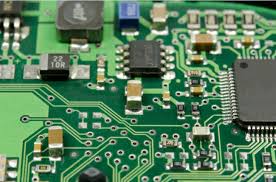Course Description:
The syllabus has been designed to develop linguistic and communicative competence of undergraduate students. The teachers also ask comprehension questions to stimulate discussion and based on the discussions the students are made to write short paragraphs /essays, participate in group discussions.
The course addresses the English language needs of the students at the undergraduate level. The focus will be upon four categories: Prose, Poetry, Vocabulary, and Grammar. In addition to these the last two units focus upon developing the writing skills of students by including essay writing and report writing. The content of the text raises questions of how English is used in India versus how it ought to be used, and thus engaging the debates about a “standard English” and the need of adapting English to the local cadence and culture of India. Similarly, the British and American variations of the language are included to orient the students to broaden their view of English as an International language. Overall the course will focus upon the critical thinking faculties of the students concerning academic, linguistic, political, literary and ethical concepts.
- Teacher: Dr SAIKIRAN D
Course Objectives
- To impart the basic concepts of data structures and algorithms
- To understanding about writing algorithms and step by step approach in solving problems with the help of fundamental data structures
- To understand the abstract data types stack, queue, deque, list, trees and graphs.
- To be able to implement the ADTs stack, queue, and deque using the C++ programming language.
- To understand the performance of the implementations of basic linear data structures.
- To understand prefix, infix, and postfix expression formats.
- To use stacks to evaluate postfix expressions.
- To use stacks to convert expressions from infix to postfix.
- To be able to implement the abstract data type list as a tree or graph using the node and reference pattern.
- To understand concepts about searching and sorting techniquesData structure is logical or mathematical organization of data.
Course Outcomes
It describes how to store the data and access data from memory. To efficiently manage memory we required data structure.
CO1 - Students develop knowledge of basic data structures for storage and retrieval of ordered or unordered data.Data structures include: arrays, linked lists, binary trees, heaps, and hash tables.
CO2 - Students develop knowledge of applications of data structures including the ability to implement algorithms for the creation, insertion, deletion, searching, and sorting of each data structure.
CO3 - Students learn to analyze and compare algorithms for efficiency using Big-O notation.CO4 - Ability to analyze algorithms and algorithm correctness.
CO5 - Ability to describe stack,queue and linked list operation.
CO6 - Students will be able to use linear and non-linear data structures like stacks, queues linked list,tree and graphs.
CO7 Ability to summarize searching and sorting techniques.
CO8 Describe the hash function and concepts of collision and its resolution methods
CO9 Student will be able to choose appropriate data structure as applied to specified problem definition.

- Teacher: NOOR UNISA
COURSE OBJECTIVES:
|
UNIT |
OBJECTIVES |
|
I |
§ Understand the voltage-current characteristics of a semiconductor diode § Understand operation of half-wave and full-wave rectifier circuits § Determination of output voltages and currents. § Analyze the operation of rectifier circuit with capacitor filter § Calculation of peak inverse voltage for rectifier circuits § Study the application of diodes in power supply circuits |
|
II |
§ Explain what is meant by the terms load regulation and line regulation; § Draw the circuit diagram for an emitter follower based on an npn transistor; § Recall that for an emitter follower: · input impedance ~hFE RE · VOUT = VIN – 0.7V § Design and analyse a voltage regulator based on a zener diode, an emitter follower and a non-inverting amplifier § Select and use the following gain formula to calculate the output voltage: VL » VZ (1 + RF / R1) |
|
III |
§ Explain how the transistor can be used to amplify a signal. § Name the four classes of amplifiers and give an explanation for each. § Explain graphically the amplification process in BJT § Describe the small signal hybrid equivalent of transistor and determine its parameters § Define feedback § Need for feed back § Types of feedback § Compare negative and positive feedback. |
|
IV |
§ Describe the basic concept of oscillators § Analyse the operation of RC and LC oscillators § Identify the Hartley oscillator. § Identify the Colpitts oscillator. § Identify the resistive-capacitive oscillator. § Determine the frequency of a resistive-capacitive oscillator. § Describe the differences between series-fed and shunt-fed oscillators. § Explain how the crystal is equivalent to the series and parallel LC circuit. |
COURSE OUTCOMES:
|
OUTCOMES |
|
CO1: The students will be able to draw and understand the use of diodes in half wave and full wave bridge rectifiers.
CO2: The students will be able to calculate the peak value of the output voltage of half wave and full wave rectifiers given the rms input voltage
CO3: The students will be able to know the principle of operation and working of Transformers and UPS CO4: The students will be able to test and troubleshoot the Industrial electronic circuits and components CO5: The students will be able to learn about different types of feedback amplifiers, Design and analyze the cascaded RC coupled BJT amplifier
CO6: The students will be able to calculate the voltage gain and to observe frequency response of RC Coupled amplifier
CO7: The students will be able to analyze and deign op-amp, oscillators ,single chip oscillators
CO8: The students will be able to demonstrate working of oscillator theory design and build a Colpitts oscillator .
|

- Teacher: SOWJANYA D
- Teacher: JAIMOLE CROSS
- Teacher: MURTHY P S